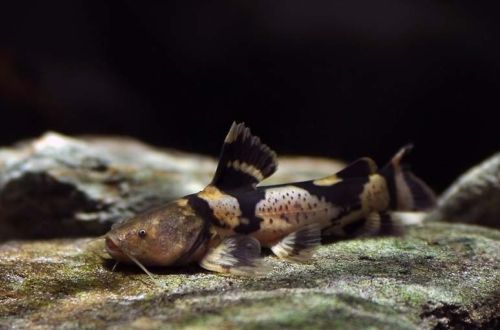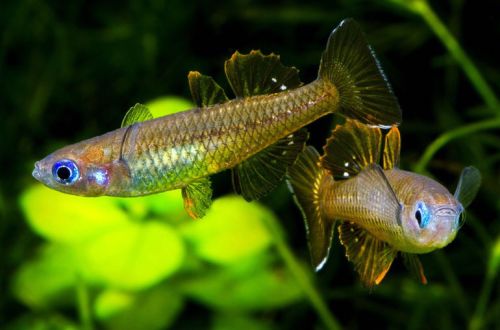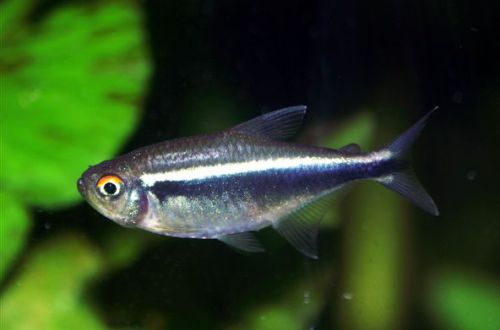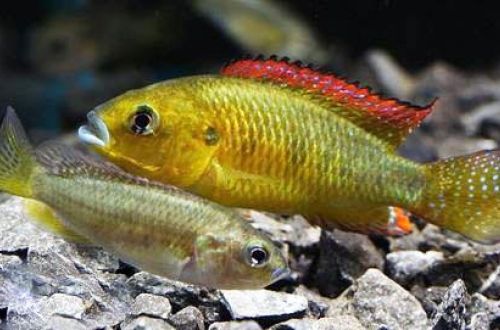
Хаплохроміс філандэр
Haplochromis philander, scientific name Pseudocrenilabrus philander, belongs to the Cichlidae family. A beautiful and capricious fish, males are belligerent towards each other and other bottom-dwelling species, so finding suitable neighbors can be difficult. As for the conditions of detention, this species is considered quite unpretentious and hardy.

змест
Асяроддзе пражывання
They are widely distributed over a large part of the African continent below the equator and to the southernmost tip. They are found on the territory of the modern states of the Democratic Republic of the Congo, Malawi, Zimbabwe, South Africa, Angola, Namibia, Zambia, Tanzania, Botswana, Mozambique, Swaziland.
They live in various biotopes, including streams and rivers, lakes, ponds and karst reservoirs. Some populations live in brackish conditions.
Кароткая інфармацыя:
- Аб'ём акварыума - ад 110 літраў.
- Тэмпература – 22-25°C
- Значэнне pH — 6.5–7.5
- Калянасць вады - ад мяккай да сярэдняй жорсткасці (5-12 dGH)
- Тып падставы - пяшчаная або дробны жвір
- Асвятленне - прыглушанае
- Brackish water – acceptable in very low concentrations
- Рух вады слабы
- Памер рыбы 7-13 см.
- Харчаванне - любое
- Нораў - умоўна мірны, за выключэннем перыядаў нерасту
- Keeping one male and several females in a group
Апісанне
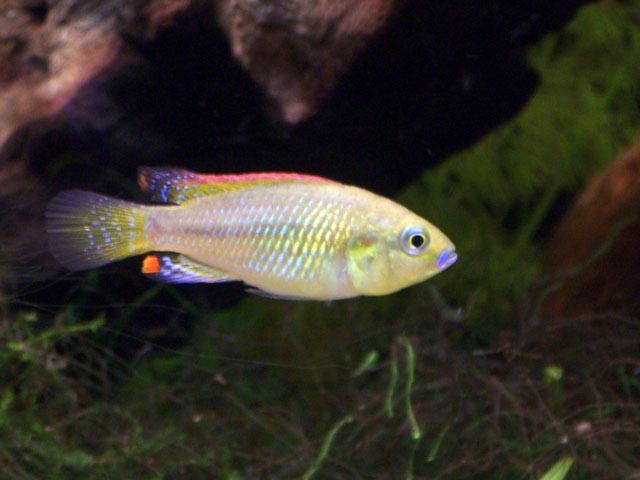
Adults reach a length of 7-13 cm. Males are larger than females and more colorful, have a yellowish color and a reddish dorsal fin, a red spot is noticeable on the anal fin. A characteristic feature of the species is the expressive blue edging of the lips of the mouth, as if specially summed up with lipstick.
харчаванне
Accepts most popular foods – dry, frozen, live. A varied diet and/or high-quality food from well-known manufacturers contributes to the brightness of the color and positively affects the overall tone of the fish.
Змест і догляд, ўладкаванне акварыума
For a pair of fish, you will need an aquarium with a size of 110 liters or more. The design is arbitrary subject to the following conditions: the presence of numerous shelters (for example, caves, snags), sandy or fine gravel substrate, thickets of plants. When using live plants, it is advisable to place them in pots, otherwise Haplochromis philander will most likely pull them out breaking the ground.
Despite the wide range of habitats, optimal water conditions still have relatively narrow boundaries: pH is near slightly acidic or neutral values with mild to medium dGH levels.
Ўтрыманне акварыума зводзіцца да рэгулярнай ачыстцы грунта ад арганічных адходаў і штотыднёвай замене часткі вады (15-20% аб'ёму) на свежую.
Паводзіны і сумяшчальнасць
May be aggressive towards other species living in the lower part of the aquarium, especially during the spawning season. If you want to keep other dwarf cichlids, catfish, chars, etc. together, then you will need a large tank (from 400-500 liters). In small aquariums, it is advisable to add fish that swim in the water column or near the surface.
Intraspecific relationships are built on the dominance of the alpha male in a certain territory, so keeping two males in a small tank is unacceptable. One male and one or more females are considered optimal.
Развядзенне / развядзенне
Breeding Haplochromis Philander in a home aquarium is not difficult. Favorable water conditions for the beginning of the mating season have a neutral pH and a temperature of around 24°C. If you feed live food, then the fish will quickly come to a state of spawning.
The male occupies a large territory near the bottom, about 90 cm in diameter, where he digs a recess – the future place of laying, and begins to actively invite females. His actions are rather rude, which is why it is recommended to keep several females so that the attention of an ardent male is distributed.
When the partners are ready, they begin a kind of dance near a pre-prepared recess in the ground. Then the female lays the first portion of eggs and, after fertilization, takes them into her mouth, the procedure is repeated. In some cases, fertilization occurs directly in the female’s mouth. This is an evolutionarily established mechanism that protects future offspring in a very competitive habitat.
It is advisable to transplant the female into a separate aquarium with identical conditions in order to protect her from the male. The entire incubation period (about 10 days) the eggs are in the mouth, and then they begin to swim freely. From this point on, the female can be returned to the general aquarium.
It is worth noting that after spawning, females change color, becoming less noticeable. In nature, they huddle in small shoals in shallow water and are at a distance from aggressive males.
Хваробы рыб
Асноўнай прычынай большасці захворванняў з'яўляюцца непрыдатныя ўмовы жыцця і няякаснае харчаванне. Пры выяўленні першых сімптомаў варта праверыць параметры вады і наяўнасць высокіх канцэнтрацый небяспечных рэчываў (аміяку, нітрытаў, нітратаў і інш.), Пры неабходнасці прывесці паказчыкі ў норму і толькі пасля гэтага прыступаць да лячэння. Больш падрабязна аб сімптомах і лячэнні чытайце ў раздзеле Хваробы акварыўмных рыб.



